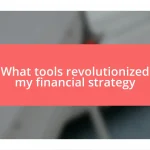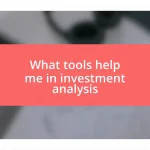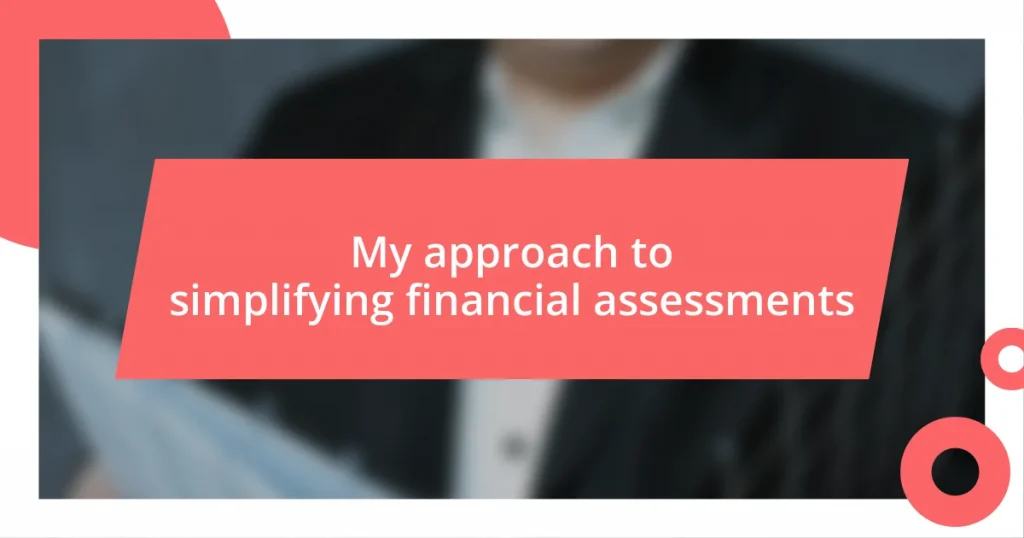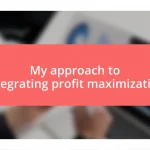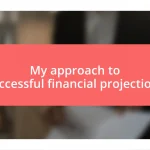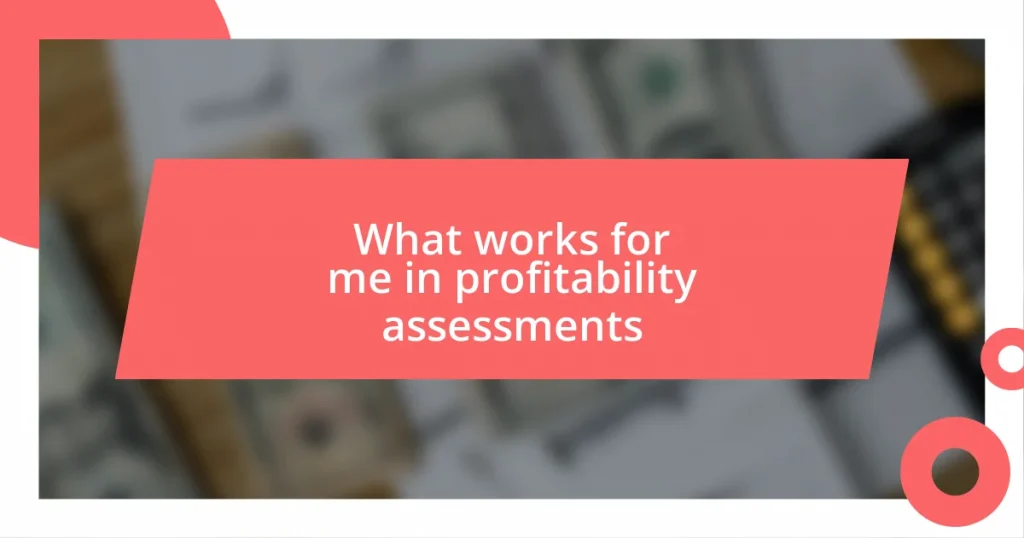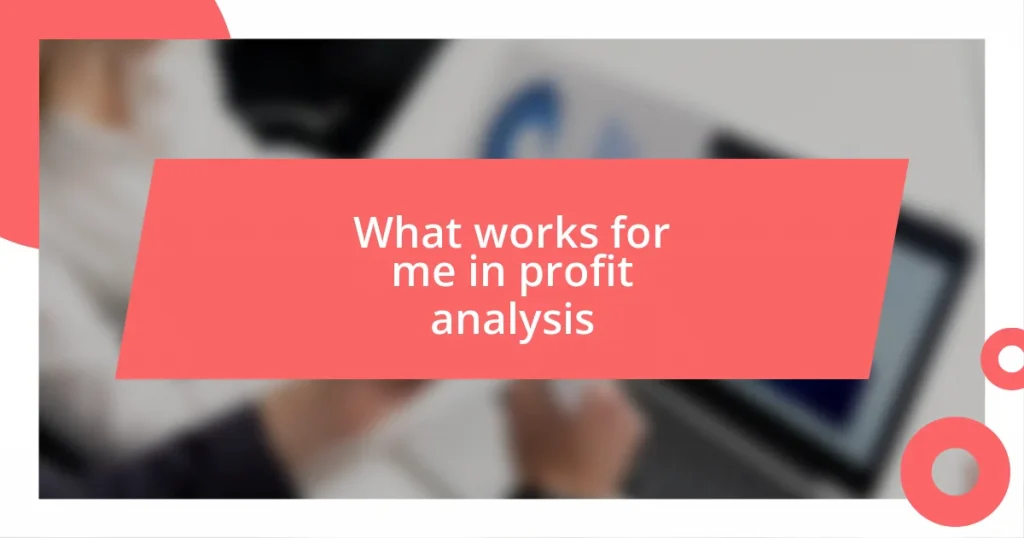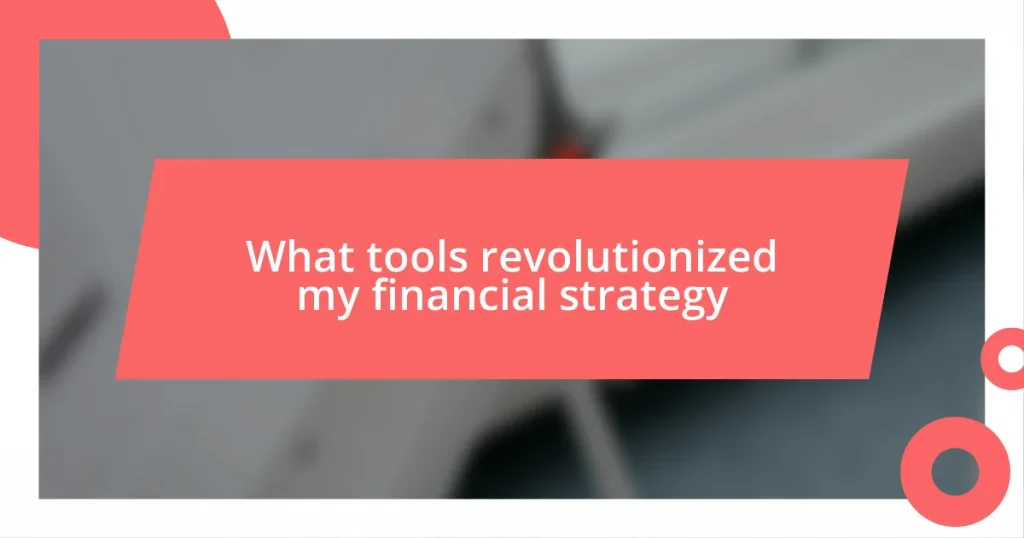Key takeaways:
- Financial assessments serve as a snapshot of one’s financial health, encompassing income, expenses, assets, and liabilities, and can be simplified through categorization and visualization.
- Identifying key financial metrics such as net worth, cash flow, and emergency fund ratio helps in understanding spending patterns and guiding financial decisions.
- Continuous evaluation and adjustment of finances, through regular reviews and feedback, enhances decision-making and uncovers opportunities for improvement.
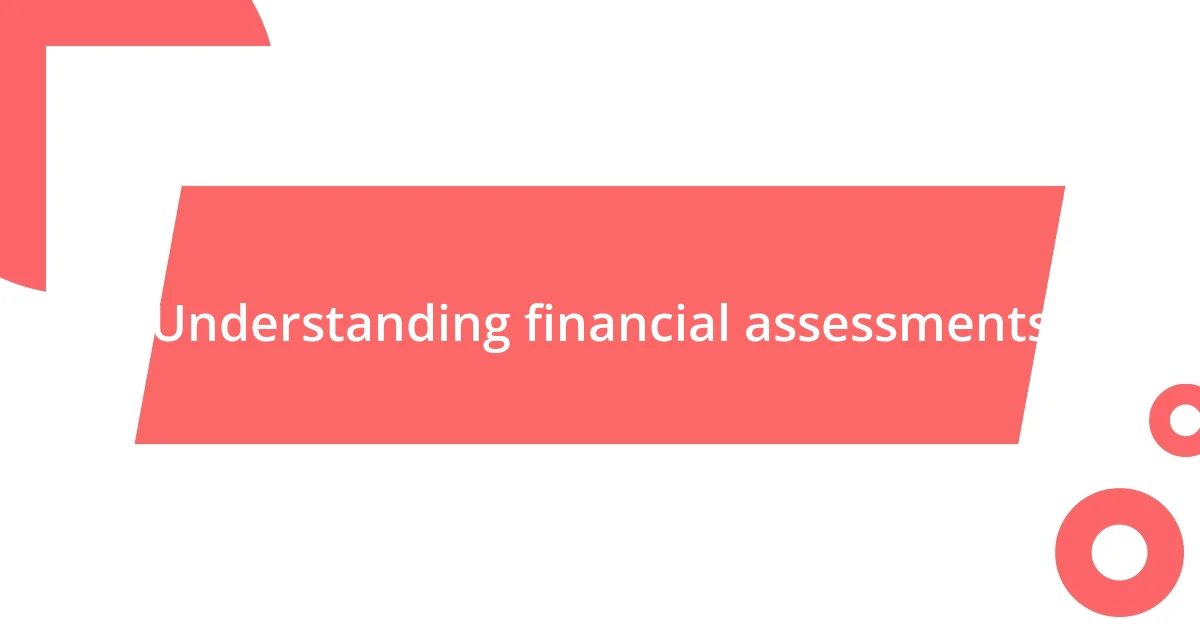
Understanding financial assessments
Financial assessments can often feel overwhelming, but understanding the basics can truly simplify the process. I remember the first time I looked at my own financial assessment; I felt like I was staring at another language. What if I told you that breaking it down into simple components could change how you view your finances?
At its core, a financial assessment is essentially a snapshot of your current financial health, helping you identify your strengths and weaknesses. This can include your income, expenses, assets, and liabilities. Reflecting on my experiences, I found that once I categorized these elements, it became easier to see where I was thriving and where I could improve. Isn’t it fascinating how clarity can provide peace of mind?
By personalizing the assessment process—maybe even sketching it out like a budgetary map—you can make it more relatable and less daunting. When I began using visual aids, like charts or graphs, I felt an emotional shift; suddenly, I wasn’t just reading numbers, but engaging with my financial story. Have you ever thought about how transforming data into something visual might change your perception?
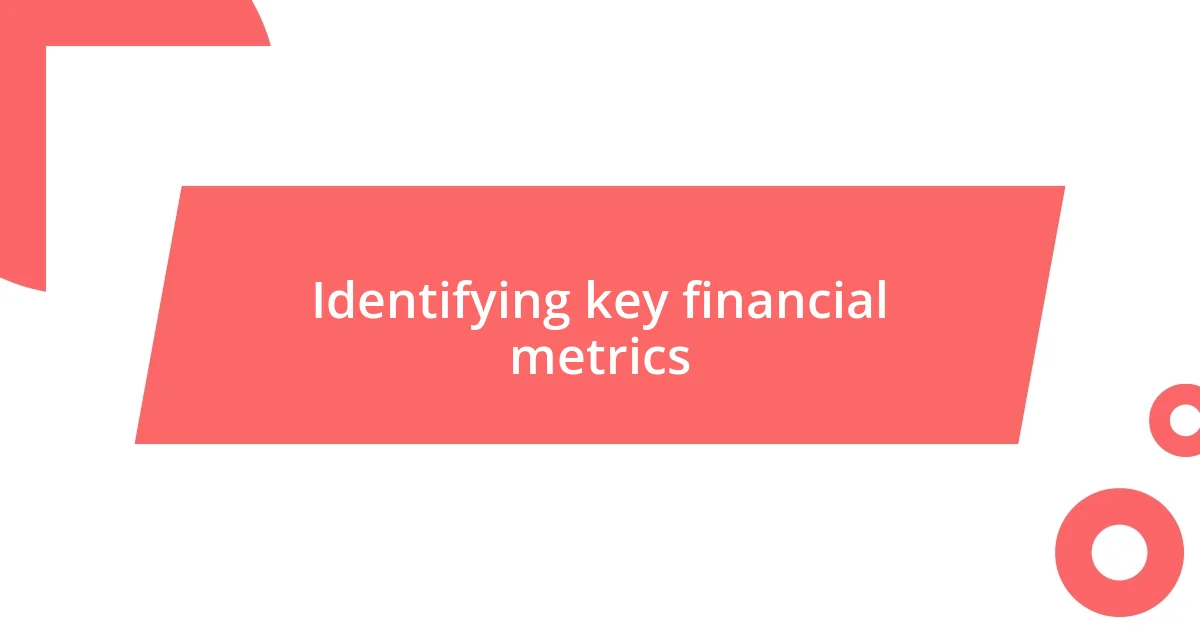
Identifying key financial metrics
Identifying the right financial metrics is crucial for gaining a clear picture of your financial health. Through my journey of delving into financial assessments, I’ve realized that certain metrics can provide insights that make all the difference. For instance, tracking my cash flow made it abundantly clear where my money was going each month, which empowered me to adjust my spending habits.
Here are some key financial metrics to focus on:
- Net Worth: This tells you the difference between your assets and liabilities, essentially reflecting your financial standing.
- Cash Flow: Understanding your inflow and outflow of cash helps identify spending patterns.
- Debt-to-Income Ratio: This measures how much debt you have compared to your income, guiding you on whether you’re within safe borrowing limits.
- Emergency Fund Ratio: This indicates how many months of expenses you can cover with your savings, offering a buffer for unforeseen situations.
I remember feeling an immediate sense of relief when I calculated my emergency fund ratio; it transformed my approach to saving. Initially, looking at all these numbers felt daunting, but as I slowly zeroed in on these metrics, I felt more in control. It’s rewarding when you can spot trends and patterns emerge, turning what once felt like a maze into a clearer path forward.
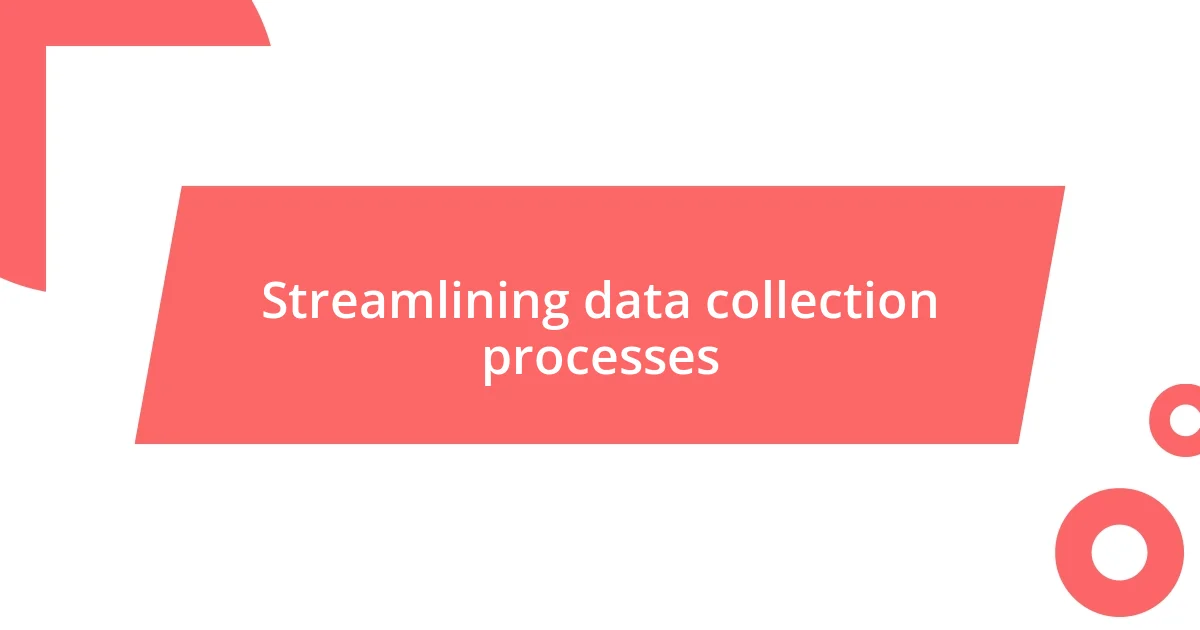
Streamlining data collection processes
Streamlining data collection in financial assessments can significantly reduce the burden of managing finances. I often found myself overwhelmed by the endless spreadsheets and documents. By implementing digital tools, I managed to cut down collection time from hours to mere minutes. For instance, using software that automatically imports bank statements eliminated tedious manual entry, freeing my mind for deeper analysis.
As I began adopting automated processes, I felt relieved and more organized. It’s like having a personal assistant that helps me gather important information without the hassle. I also noticed that centralizing my data collection in one platform enhanced my analysis. I could easily cross-reference financial data, making it simpler to assess trends. Have you ever considered how much easier your financial journey could be with the right tools in place?
Once I streamlined my collection processes, I found myself having more time to focus on strategy rather than data gathering. For example, incorporating mobile apps that track expenses on the go allowed me to capture real-time insights. Based on my experience, being proactive in data collection has transformed my financial assessments into powerful decision-making tools.
| Data Collection Method | Pros |
|---|---|
| Manual Entry | Time-consuming, prone to errors |
| Automated Tools | Efficient, reduces human error |
| Mobile Apps | Real-time tracking, convenient |
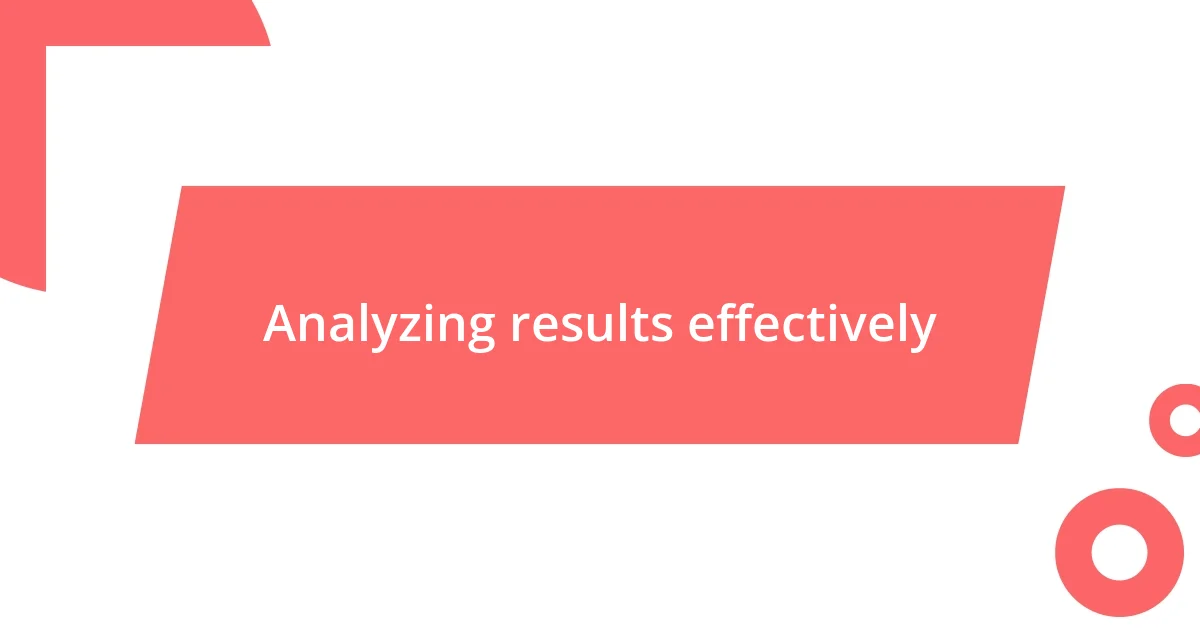
Analyzing results effectively
When it comes to analyzing results, I’ve found that context is everything. Simply looking at numbers in isolation never gives the full story. For example, after looking at my net worth year after year, I started to notice not just the fluctuations but the reasons behind them, like unexpected expenses or changes in income. Have you ever stopped to consider how external factors might impact your financial metrics? Understanding these nuances helps me draw valuable conclusions rather than just reacting to surface-level data.
The visualization of data can also make a world of difference. I remember the first time I turned my cash flow statistics into charts—I couldn’t believe how much clearer everything became! Suddenly, trends that were previously hidden popped out at me, allowing me to make more informed decisions. Whether it’s through pie charts showing spending categories or line graphs tracking savings over time, I find these visuals allow me to engage more deeply with my finances. What kind of insights could you gain if you transformed your data into something visual and tangible?
Lastly, I’ve learned that regular reviews of my financial assessments keep me accountable and proactive. Committing to a monthly check-in has become second nature to me, and it’s during these sessions that I often discover new patterns. I once embraced the idea of a financial “reset” every quarter, where I analyzed what had changed and how that impacted my overall strategy. This practice not only sharpened my focus but also built my confidence in making actionable decisions. How often do you revisit your financial assessments, and what have you discovered during those moments?
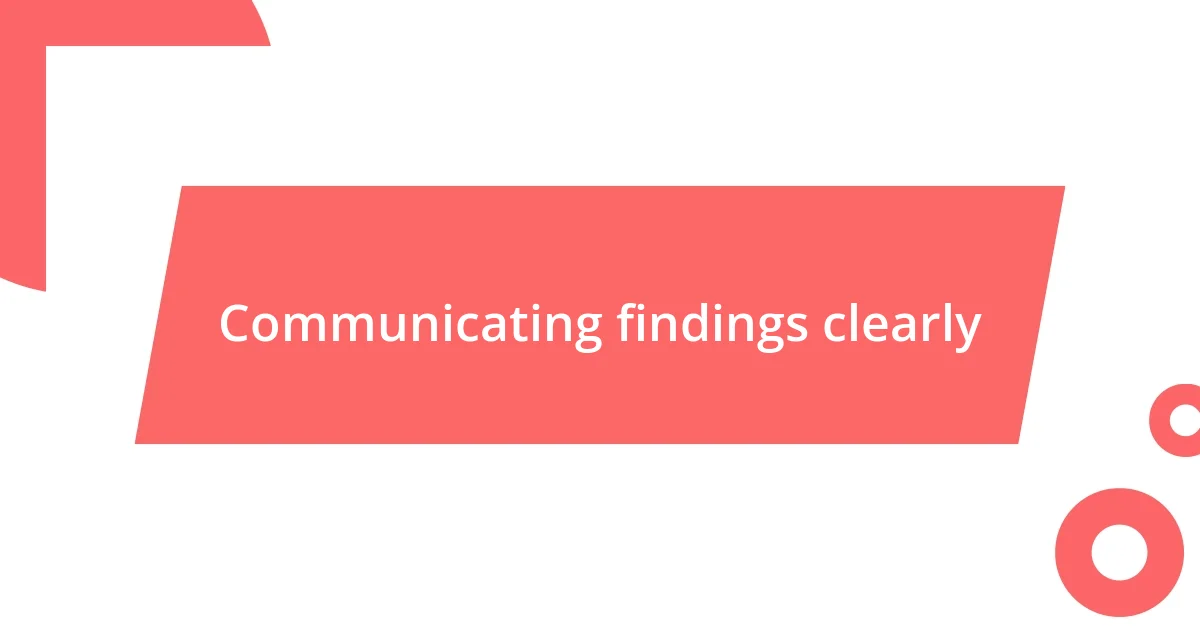
Communicating findings clearly
Communicating findings clearly is crucial in financial assessments. I’ve learned that simply sharing data isn’t enough; the way I present my findings can either make or break understanding. For example, during a recent presentation, I chose to use simple language and relatable analogies. Instead of saying “debt-to-income ratio,” I explained it as “how much of your monthly income goes toward paying off debts.” This approach made a significant impact; I could see my audience nodding along, appreciating the clarity.
Additionally, visuals play an integral role in enhancing communication. I remember a time when I created a straightforward slideshow filled with graphics rather than endless bullet points. By using clean charts that depicted trends and comparisons, I could convey complex information at a glance. It struck me how much more engaged my audience was, asking questions and discussing insights. It prompts me to ask: have you ever considered how much a well-designed visual can strengthen your message?
Lastly, I’ve found that storytelling transforms mundane data into compelling narratives. When I walk my audience through my financial journey, sharing anecdotes about struggles and successes, it fosters a connection that plain numbers don’t. For instance, explaining how a budget overhaul changed my lifestyle not only intrigued listeners but also made them reflect on their own experiences. Have you ever felt moved by someone’s story, realizing a shared challenge? That emotional resonance can motivate others to take action.
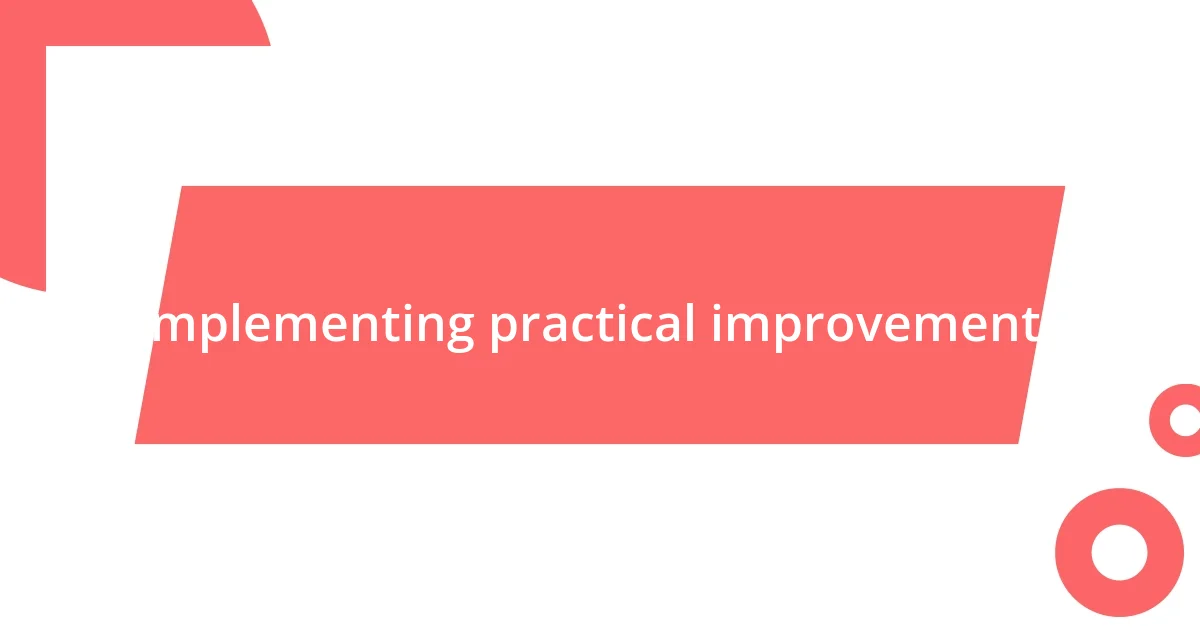
Implementing practical improvements
Implementing practical improvements requires a willingness to experiment and adapt. I remember when I first introduced automated reminders for bill payments. Initially, I was hesitant—how could a simple alert change anything? But when I saw my late fees drop and my credit score rise, I realized that small adjustments could have a profound effect. Have you considered how automation could streamline your financial processes?
Another improvement I adopted was creating a budget that’s not just a spreadsheet but a living document that I engage with regularly. At first, I thought budgets were rigid and suffocating. However, when I started treating my budget as a flexible tool, adjusting it according to my needs and goals, everything shifted. The result? A refreshing sense of control over my finances. Have you tried involving yourself more dynamically in your budgeting process?
Incorporating feedback loops into my financial assessment strategy was a game-changer. I began seeking opinions from trusted friends and financial mentors, which opened my eyes to perspectives I hadn’t considered. For example, after discussing my investment choices with a mentor, I recognized the importance of diversifying my portfolio. That conversation not only improved my financial decisions but also boosted my confidence in my approach. How often do you reach out for insights to refine your financial strategy?
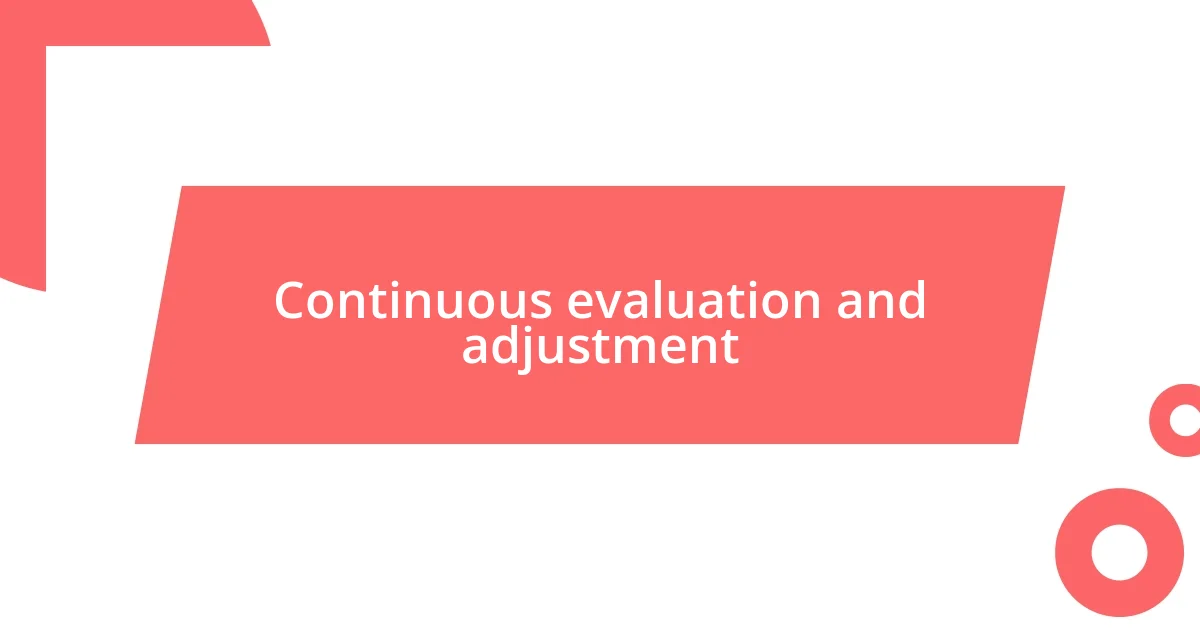
Continuous evaluation and adjustment
Continuous evaluation and adjustment in financial assessments is an ongoing journey for me. Recently, I revisited my investment strategy, realizing it had been nearly a year since my last assessment. When I compared my portfolio’s performance against market trends, I noticed underperforming assets that needed addressing. Have you ever felt that nagging worry after postponing a financial review? I certainly have, and it motivated me to shift gears.
One experience that stands out was when I set a regular schedule for reviewing my budget—every month without fail. Initially, it felt like a chore, but over time, I began to see it as a regular “financial check-up.” As I tracked my expenses and income more closely, I discovered subtleties I had previously overlooked. I remember the rush of excitement when I found $100 I could redirect towards savings. How satisfying is it to uncover hidden opportunities in your finances?
Incorporating this habit of reflection has profoundly impacted my decision-making. I often jot down thoughts after each assessment, pondering on what worked and what didn’t. This personal log not only holds me accountable but also reveals patterns over time. Recently, I concluded that my impulse purchases were more rampant during certain months due to seasonal sales. Recognizing this trend now helps me adjust my spending plan accordingly. Have you taken the time to analyze your financial behavior? The process can uncover insights that lead to better choices in the future.


